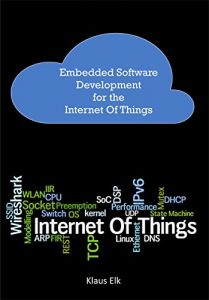Details can be found on the web - when you know what to look for
The aim of this book is to help you understand the technologies behind the devices used in the Internet Of Things. This is done with a mixture of theory, examples and 'war-stories'.
This book may be read by senior students, but it is more likely to be read by programmers and developers, who have done some programming of PC's in Windows or Linux,
and are now faced with developing devices for the Internet Of Things.
Basic programming skills are thus assumed, whereas no prior knowledge on TCP/IP and Digital Signal Processing is needed.
Based on many years of experience as developer, university-teacher and manager, the author's personal view on best practices in the embedded world is offered.
One of the strongest features of this book is the many B/W figures. They make the book inviting and helps the reader remember the knowledge given.
The aim of this book is to help you understand the technologies behind the devices used in the Internet Of Things. This is done with a mixture of theory, examples and 'war-stories'.
This book may be read by senior students, but it is more likely to be read by programmers and developers, who have done some programming of PC's in Windows or Linux,
and are now faced with developing devices for the Internet Of Things.
Basic programming skills are thus assumed, whereas no prior knowledge on TCP/IP and Digital Signal Processing is needed.
Based on many years of experience as developer, university-teacher and manager, the author's personal view on best practices in the embedded world is offered.
- Part I introduces the main features of Embedded Operating Systems and modern highly integrated CPU's and thus builds the foundation for part II.
- Part II - on Internet Protocols and Digital Filters - is the main 'textbook'. It provides a lot of facts, backed up by examples.
The many network cases are illustrated with the help of WireShark Captures.
The chapter on digital filters is focused on making the reader understand the basics, without getting lost in formulas. - Part III describes the authors experience with best practices when working with embedded networking.
The author's experience as a developer, combined with his overview as manager, results in a pragmatic and higly usable set of guidelines.
One of the strongest features of this book is the many B/W figures. They make the book inviting and helps the reader remember the knowledge given.






